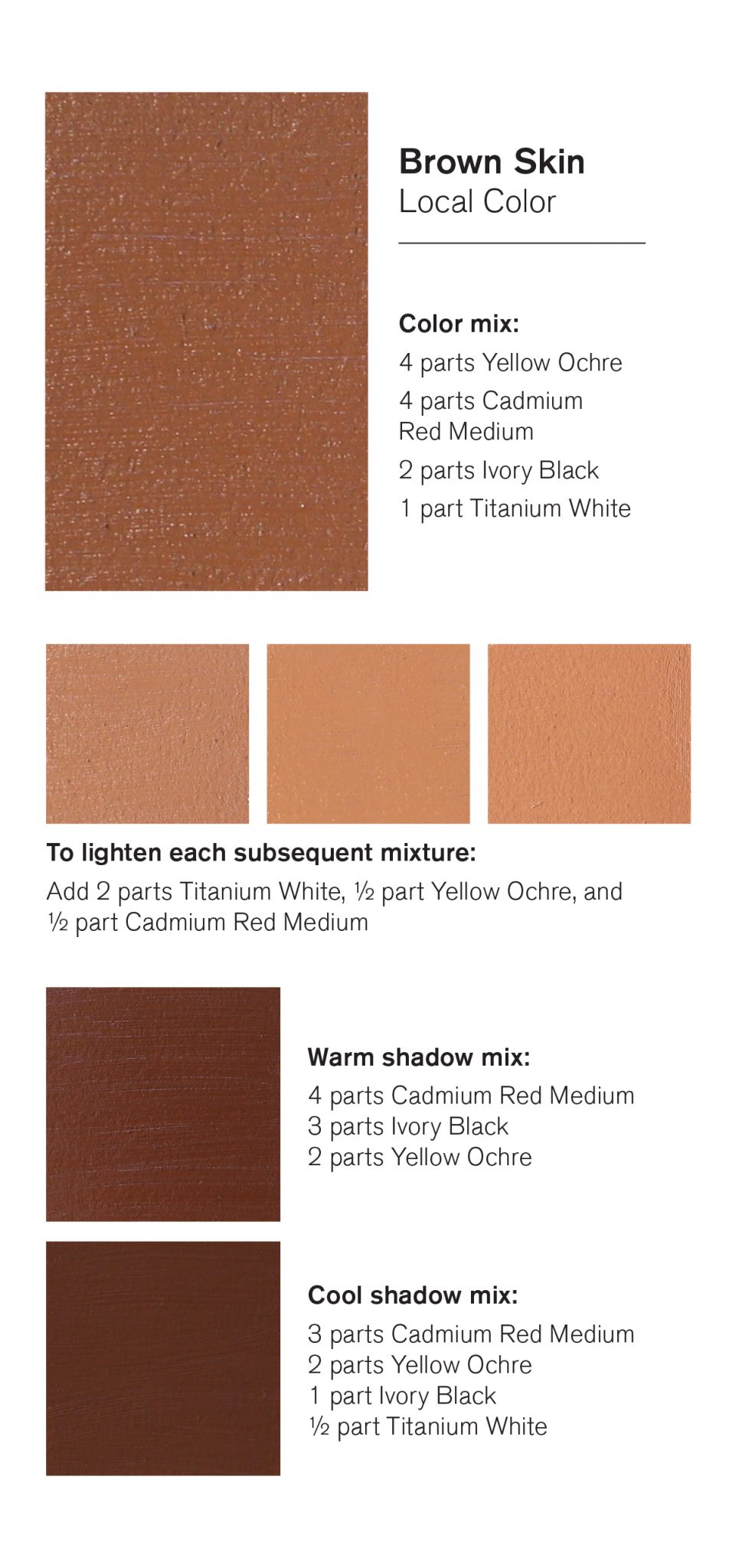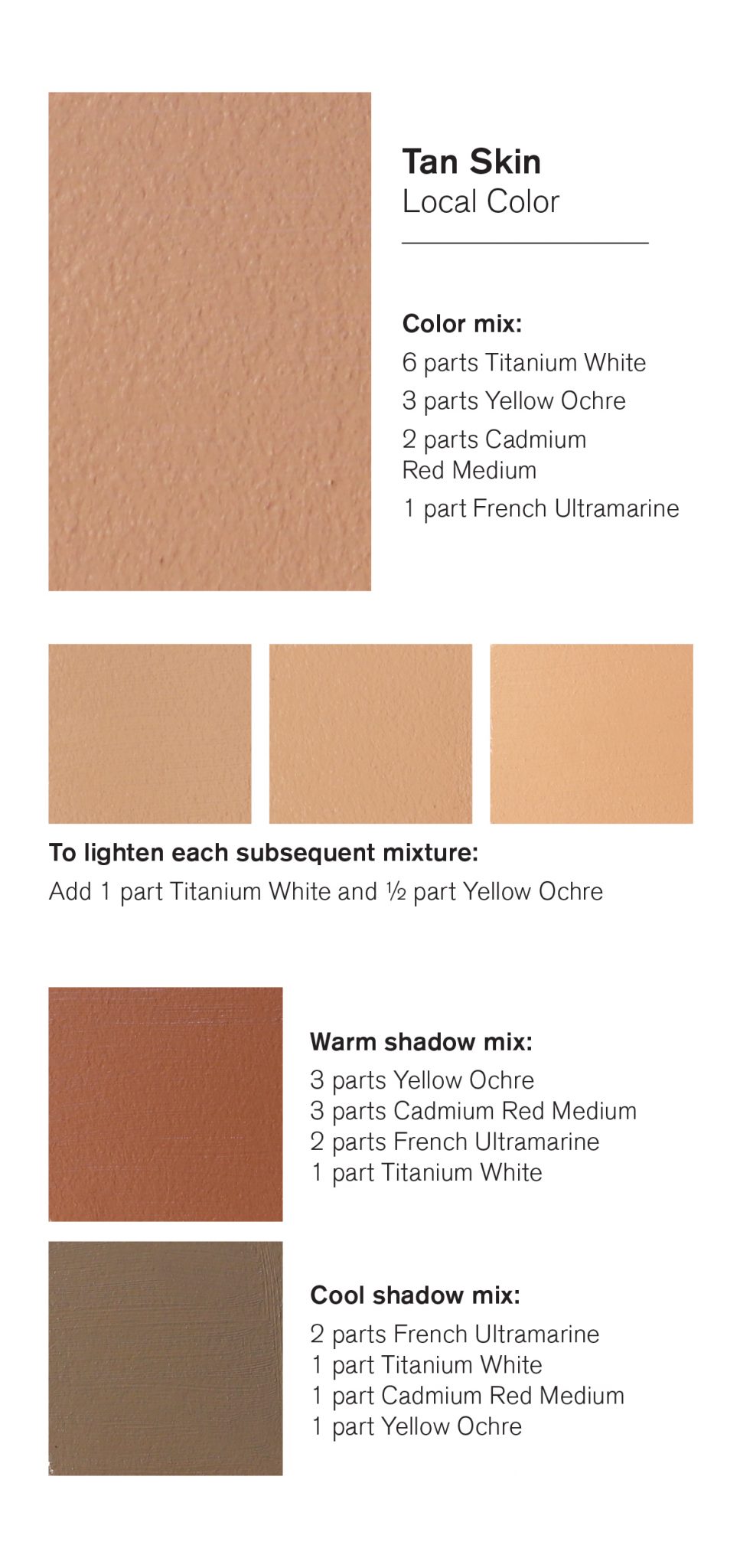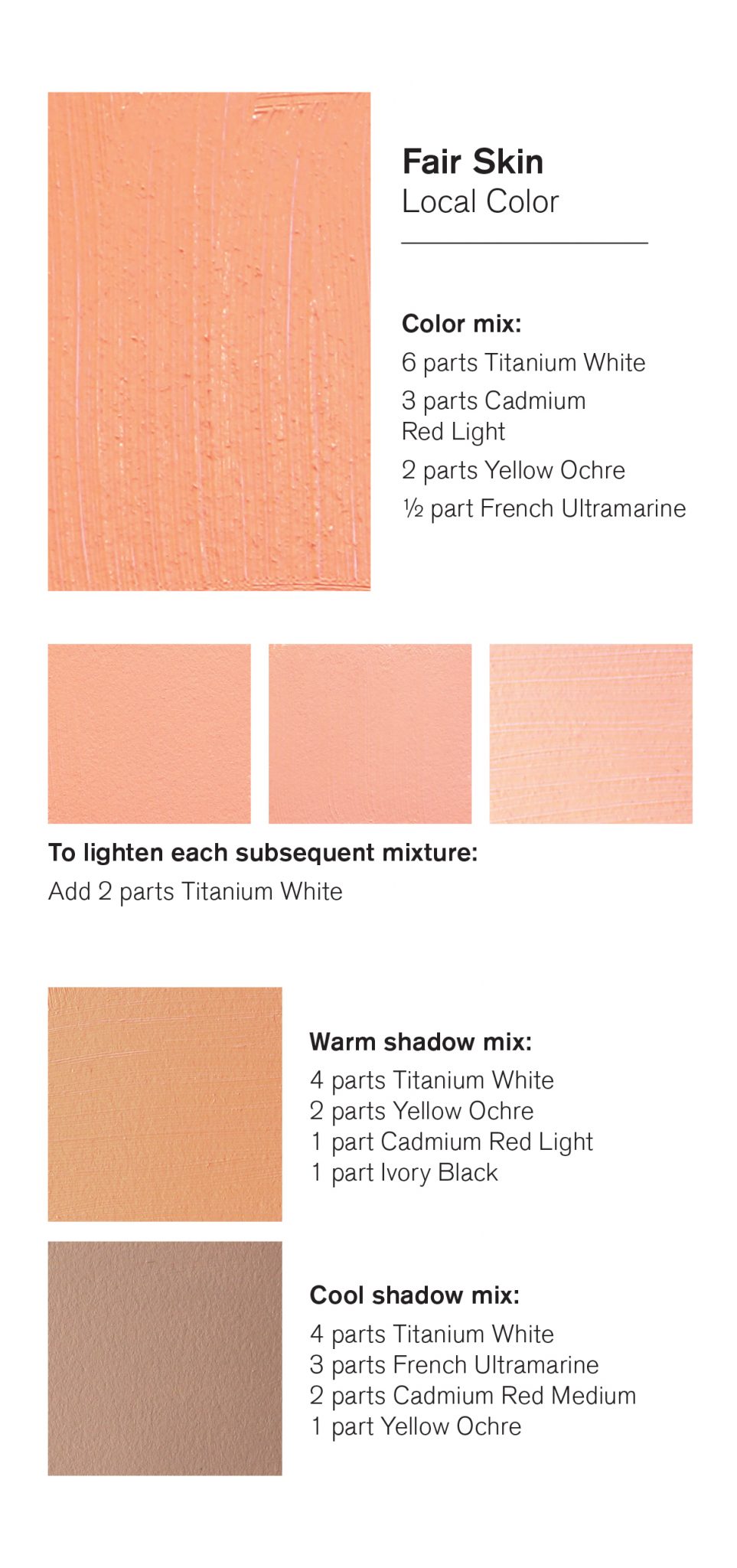Painting Skin Tones with Winton Oil Colour
October 12, 2021
A Colour Selection and Mixing Guide for Skintones
The world is full of people with an unbelievable array of skin tones. For artists or students wishing to expand their practice into portraiture or study from the nude model, this variety is frequently a source of confusion that confounds their approach and leads to frustration – usually summed up in a single question: “How do you paint skin colour?”
The bottom line is that no single color can be called “skin color.” Perhaps a better place to start is by proposing and answering a different question, “WHO is it you wish to paint?” and then targeting your colour choices and mixing to represent that particular individual’s skin palette. This sounds simple enough, but when faced with the rather large selection of colours available from most paint manufacturers; choosing colours and knowing how to effectively mix them to represent what you see can become a daunting task.

Painting by Jimmy Leslie / @jimmyleslieart on Instagram
The Winsor & Newton Winton Oil Colour range will be used to create a limited, core palette that can be adjusted to yield a wide range of skin tones.
Colour selection
When approaching the representation of human skin, it is best to focus on seeing skin tones in terms of relationships based in the following colour attributes:
- Temperature: warm versus cool
- Bias: which way a colour leans on the colour wheel
- Value: light versus dark
It is better to focus on these three attributes than trying to isolate, mix, and match “named” colours.
The colours from the Winsor Newton Winton line that are recommended as a versatile limited mixing palette for skin tones include Cadmium Red Light and Cadmium Red Medium, Yellow Ochre, French Ultramarine, Titanium White and Ivory Black. Within the red family, it is recommended to include both the cooler, darker Cadmium Red Medium and the warmer, lighter Cadmium Red Light because using each of these two variations will give you more control over mixing lighter versus darker skin tones.

Mixing Instructions
Winsor & Newton’s mixing instructions will guide you through using the recommended limited palette to mix four basic, local skin tones: Fair, Tan, Brown and Dark. These four local skin tones are designed to represent an individual’s overall skin tone, irrespective of light and shadow or light source. Additionally, there are instructions for lighting the local skin tones and for mixing warm and cool shadow variations.
Because it can be hard to achieve exact measurements of paint, especially when working within the flow of the studio, there are measurements in terms of “parts” to define the proportional mixing ratios. This will allow you to determine the size of the “parts” based on your own hand/eye, and also on how much paint you need to mix up for your working purposes. Start by figuring out what your essential “part” size is, and then eyeball what two parts, half a part, etc. might look like comparatively.




Don’t worry if things are not completely exact and remember that these instructions should be thought of as starting points only. Also, please note that the colours represented in this guide may not precisely match those you have created before you. Any of the mixing ratios can be adjusted to serve your specific needs.
